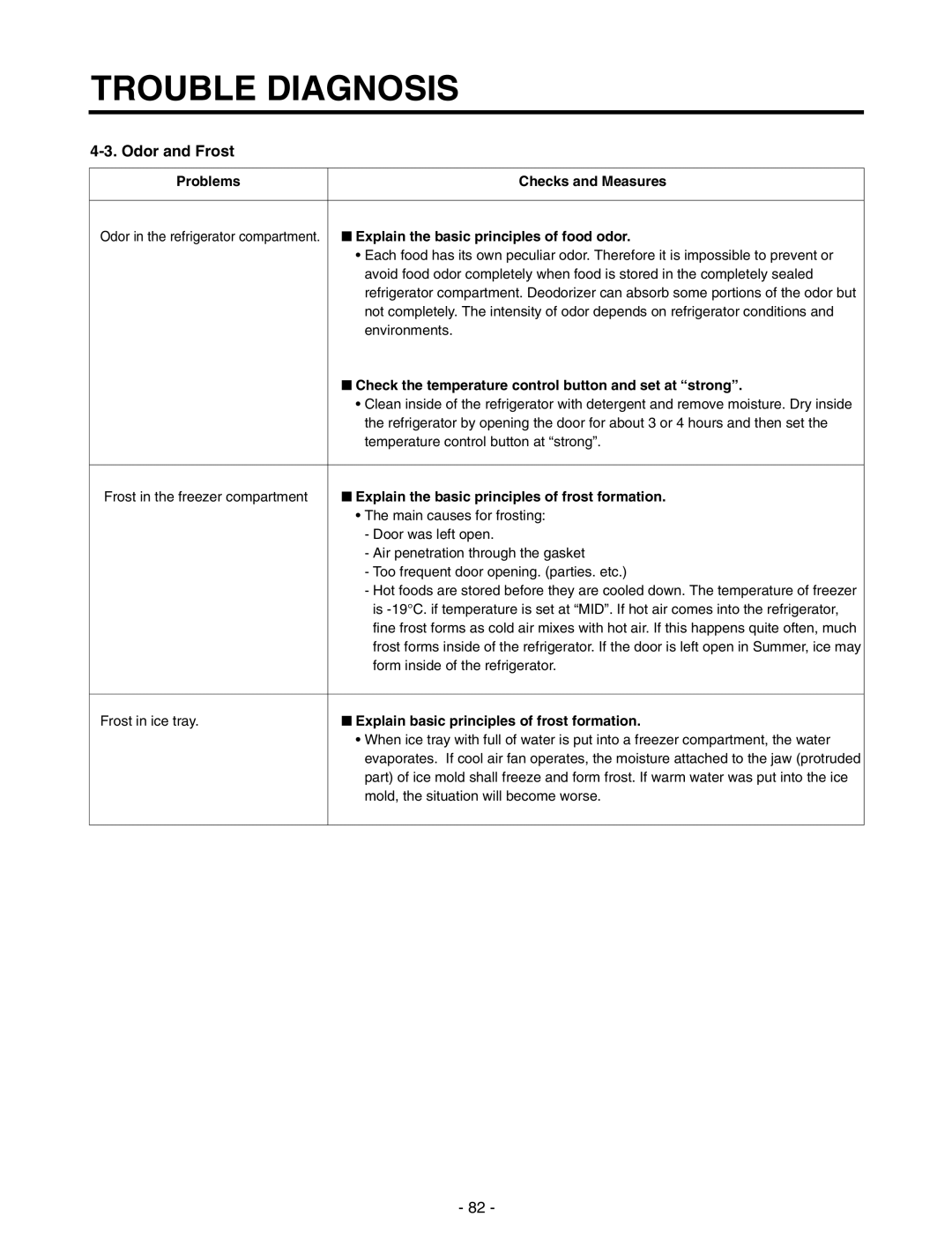TROUBLE DIAGNOSIS
4-3. Odor and Frost
Problems | Checks and Measures |
|
|
Odor in the refrigerator compartment. | ■ Explain the basic principles of food odor. |
| • Each food has its own peculiar odor. Therefore it is impossible to prevent or |
| avoid food odor completely when food is stored in the completely sealed |
| refrigerator compartment. Deodorizer can absorb some portions of the odor but |
| not completely. The intensity of odor depends on refrigerator conditions and |
| environments. |
| ■ Check the temperature control button and set at “strong”. |
| • Clean inside of the refrigerator with detergent and remove moisture. Dry inside |
| the refrigerator by opening the door for about 3 or 4 hours and then set the |
| temperature control button at “strong”. |
|
|
Frost in the freezer compartment | ■ Explain the basic principles of frost formation. |
| • The main causes for frosting: |
| - Door was left open. |
| - Air penetration through the gasket |
| - Too frequent door opening. (parties. etc.) |
| - Hot foods are stored before they are cooled down. The temperature of freezer |
| is |
| fine frost forms as cold air mixes with hot air. If this happens quite often, much |
| frost forms inside of the refrigerator. If the door is left open in Summer, ice may |
| form inside of the refrigerator. |
|
|
Frost in ice tray. | ■ Explain basic principles of frost formation. |
| • When ice tray with full of water is put into a freezer compartment, the water |
| evaporates. If cool air fan operates, the moisture attached to the jaw (protruded |
| part) of ice mold shall freeze and form frost. If warm water was put into the ice |
| mold, the situation will become worse. |
|
|
- 82 -
